Everyone is buying in on natural flavors and colors. It’s now only a matter of how far these sibling industries can push the boundaries, as the role they play in the food market is unquestioned. The use of botanical extracts in lieu of synthetic molecules is now mainstream, according to Amandine De Santi, business manager at NATUREX, Avignon, France. “The use of natural flavors, for example, is no longer a way to differentiate from the competition, but it has become a key requirement for consumers, especially in products for kids or with a healthy positioning,” she says.
We’ve got a few updates on how companies are using natural ingredients to make our foods taste better and look more vivid. But first, the debate over the concept of “natural” food additives deserves some air time.
Just What Is Natural?
To begin, some definitions are in order, courtesy of the U.S. Food and Drug Administration (FDA). The agency defines natural flavors with a somewhat detailed, intricate block of text that begins like this: “An essential oil, oleoresin, essence or extractive, protein hydrolysate, distillate, or any product of roasting, heating or enzymolysis…” It then continues on to name the various natural sources from which these natural flavoring components can be derived, like spices, fruit juices, plant material, meat or dairy products, and concludes by stating that it must primarily serve a flavoring rather than a nutritional function in food.
Carol Locey, director of product management for 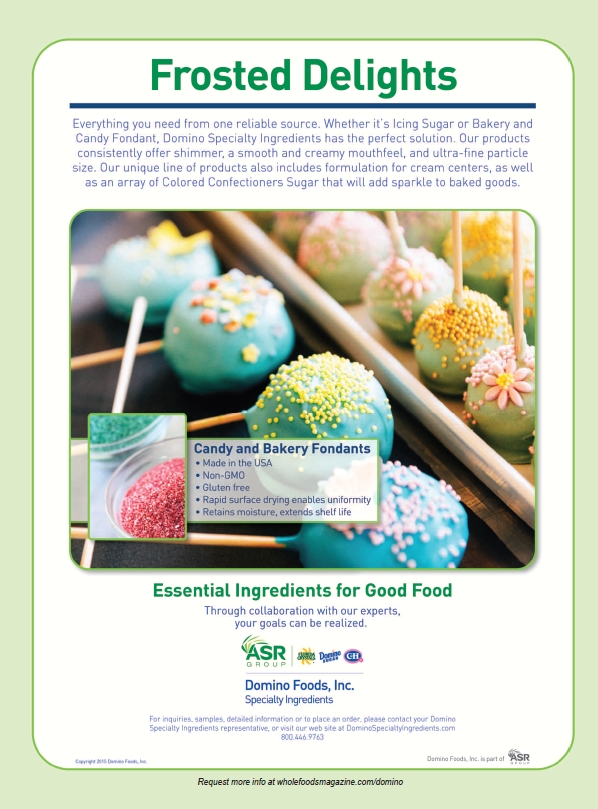 colors at Kalsec, Kalamazoo, MI, gives us the regulatory breakdown on natural color additives. FDA is responsible for regulating them all—any dye, pigment or substance capable of imparting color when added or applied to a food. Locey says that FDA has two color classifications: those that are 1) subject to batch certification or 2) exempt from certification. Colors that must be batch certified by FDA are synthetically produced, such as FD&C Red No. 40. Some exempt colors are also synthetically produced, like beta-carotene, while most exempt colors are derived from natural sources such as paprika, annatto, turmeric, carrot and sweet potato. Only those colors listed in the Code of Federal Regulations on either the Certified or Exempt from Certified lists may be used in foods.
colors at Kalsec, Kalamazoo, MI, gives us the regulatory breakdown on natural color additives. FDA is responsible for regulating them all—any dye, pigment or substance capable of imparting color when added or applied to a food. Locey says that FDA has two color classifications: those that are 1) subject to batch certification or 2) exempt from certification. Colors that must be batch certified by FDA are synthetically produced, such as FD&C Red No. 40. Some exempt colors are also synthetically produced, like beta-carotene, while most exempt colors are derived from natural sources such as paprika, annatto, turmeric, carrot and sweet potato. Only those colors listed in the Code of Federal Regulations on either the Certified or Exempt from Certified lists may be used in foods.
Locey says companies such as hers use sources like annatto, caramel, turmeric, carrot and paprika to achieve natural color in a variety of applications. “FDA has not developed a definition for the use of the term ‘natural’ or its derivatives in regards to any category other than flavors,” she says. However, “exempt” colors are listed in the Code of Federal Regulations, and this allows her company to provide a Certificate of “Natural” Origin for its colors, which distinguishes them from synthetic colors like FD&C Red No. 3.
But for many observers, including many consumers, the discussion cannot end there. “When defining natural, you really need to look at it from two perspectives; one is from a regulatory or legal perspective, and second is from a consumer perspective,” says Stefan Hake, CEO of GNT USA, Inc., Tarrytown, NY. For one thing, we must contend with the mysterious “natural flavors” that we find listed as ingredients in countless food products. What exactly are these “natural flavors,” and how natural, exactly, is their sourcing and production?
While it is true that FDA provides a regulatory definition for natural flavors, Hake says that if the average consumer were asked to define it for themselves, the responses might prove to be in conflict with what FDA technically allows. He says that a consumer walking down a grocery aisle and picking up a product containing “natural flavor” might assume it came directly and uncomplicatedly from an edible food, like a fruit, spice or herb. “However, if the consumer were to dig deeper into the FDA provided definition, learning about the multitude of solvents and chemicals allowed to manufacture ‘natural flavors,’ they would probably be pretty appalled,” Hake says. There is, then, a disconnect between regulation and consumer expectation.
 Some instances of “natural” foods and food additives are indeed simple, Hake explains, such as eating an unprocessed apple, or when a chef uses fresh ingredients to add color to a final dish. He says companies like his apply this concept to food additives for commercial purposes. “Our ‘colors’ are simply edible concentrates of different fruits and vegetables, used for the purpose of coloring effect in a food or beverage,” he says.
Some instances of “natural” foods and food additives are indeed simple, Hake explains, such as eating an unprocessed apple, or when a chef uses fresh ingredients to add color to a final dish. He says companies like his apply this concept to food additives for commercial purposes. “Our ‘colors’ are simply edible concentrates of different fruits and vegetables, used for the purpose of coloring effect in a food or beverage,” he says.
The contrast between processed and home-prepared macaroni and cheese provides a good example, according to Hake. Typically, the bright yellow color in packaged products is achieved through the use of artificial colorants like FD&C Yellow No. 5. “On the other hand, making it at home, a beautiful yellow color can be achieved by making a puree of pumpkin,” he says. Translating this to a commercial context, Hake says the label of a mac and cheese product using natural color could read: “pasta, butter, cheese, pumpkin concentrate (color).” Natural colors enable consumers to recognize and connect with products more easily, he says.
Hake cautions that the processing of some so-called “natural” colors, such as some turmeric ingredients, may seem straightforward and natural to consumers, when in fact a multitude of solvents and chemicals may be used in their production. “This is why we believe that only color ingredients made from edible fruits, vegetables and plants that are processed physically with water, also known as ‘coloring foods,’ satisfy the “natural’ color expectations of consumers,” he says.
Despite these ambiguities, there is a strong impetus among consumers to move away from products containing artificial flavors and toward those that contain “natural” ones, according to Jean Shieh, Savory Flavors marketing manager at Sensient Flavors, Hoffman Estates, IL. She says her company follows FDA regulations and guidelines for proper labeling of food ingredients with its own natural additives. Food manufacturers that want to keep up with this consumer trend need natural flavors that can be labeled as such, she says. “The need for a ‘clean label’ challenges product developers to select ingredients prudently, without sacrificing taste.”
Forecasting Flavors
Food flavor ingredient trends naturally correspond with the current vogues and consumer demands in the food market at large. Shieh says that as a flavor supplier, her company follows the food and beverage market through grass-roots research. “We identify food and beverage trends that have potential for the next two to five years, and turn the trends into sustainable flavors that can go into the mass market,” she says.
One such trend is sugar, salt and fat reduction. With Baby 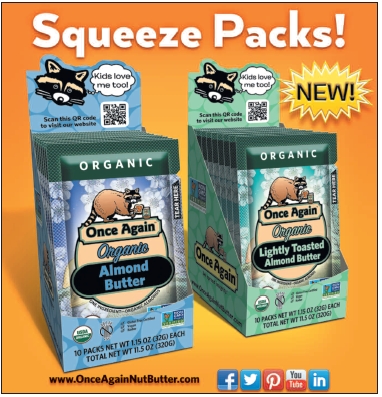 Boomers and Millennials on a health and wellness kick lately, Shieh says food manufacturers face the challenge of reducing fat and sodium content while retaining the fatty mouthfeel and salty taste consumers are used to. This need is spurring innovation in flavor technology.
Boomers and Millennials on a health and wellness kick lately, Shieh says food manufacturers face the challenge of reducing fat and sodium content while retaining the fatty mouthfeel and salty taste consumers are used to. This need is spurring innovation in flavor technology.
Likewise, the drive to reduce sugar explains the recent success of natural sweeteners like stevia and Monk fruit, says De Santi. However, these options present formulation challenges, and she says that her company offers an ingredient extracted from Thaumatococcus daniellii (Talin from NATUREX) that can mask the aftertastes and bitterness of some high-intensity sweeteners. “It can also be used to boost salt perception and therefore helps to decrease the sodium content in savory products,” says De Santi. Herb and spice extracts are also increasingly used to decrease the salt content in savory products, as they give body to formulas and boost aromas, thereby compensating for the decrease in sodium chloride, she adds.
Other larger movements are also impacting the food and food flavor industry. De Santi points to groups like the Non-GMO Project, and legislation like California’s Proposition 65, as signs of a trend toward better informing and protecting consumers. “This heightened awareness also means that food manufacturers need to continuously reformulate their products, representing a huge challenge,” she says. Her company has developed a range of plant extracts to meet increased demand for products free of GMOs and caramel color (certain types of which contain a compound banned by Prop 65).
Consumer interest in exotic, bold flavors has been rising for quite some time, and De Santi says people are now looking for more specific, regionalized flavors like those of Japanese and Korean cooking. As people grow accustomed to ethnic foods, they begin to seek out more surprises, she adds.
Jill McKeague, market development manager for Kalsec, says South Asian and Southeast Asian cuisines including Thai, Vietnamese and Indian are also very popular. “It is imperative that these different ethnic cuisines have an authentic flavor. This may mean toasting the spices or using fresh herbs,” says McKeague. Her company has responded to this need with a line of spice extracts, as well as a line of ingredients (IsoFresh) that maintain their fresh flavor through food processing.
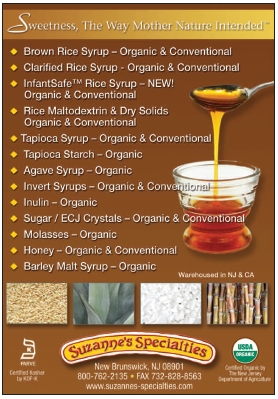 Bold and exotic flavorings can be employed in a variety of ways. “We recently launched several chili flavors including Peruvian Aji Panca and African Peri-Peri, and ethnic flavors including Thai Basil, Galangal and Korean Gochujang. These flavors not only can be used in exotic dishes, but also applied to comfort snack food,” says Shieh.
Bold and exotic flavorings can be employed in a variety of ways. “We recently launched several chili flavors including Peruvian Aji Panca and African Peri-Peri, and ethnic flavors including Thai Basil, Galangal and Korean Gochujang. These flavors not only can be used in exotic dishes, but also applied to comfort snack food,” says Shieh.
Complex hot and spicy flavors are trending, says McKeague, and “spicy and sweet” as well as “spicy and tangy” flavor combinations are very appealing to a large subset of consumers. Adding a “culinary dimension to heat expression,” she says one of her company’s product lines (Fusionary Heat) offers non-traditional pairings of heat with savory, sour, sweet and tangy flavors, providing the intense experience many are after. The savory/sweet combination trend can also be seen in products that blend rosemary or thyme with chocolate, says De Santi. Another example is adding ginger or lemongrass to candies.
Indeed, sweets are now playing host to a variety of flavor sensations. “In candies and chocolate applications, we have seen a growing interest in our specific chili peppers, like chipotle or ancho, and our extracts with tingling or numbing effects like jambu, from Brazil, or Szechuan pepper, extracts that are more commonly seen in savory products,” says De Santi.
Despite all the innovation, the natural flavors sector still faces major challenges with ingredient stability, De Santi explains. She says her company has seen an uptick in interest in a solution (EZ-Caps) that addresses stability. “This technology is used to protect volatile compounds from aromatic loss and from degradation generated by heat or oxidation,” she says. It works by encapsulating essential oils and oleoresins in a maltodextrin or starch matrix, which is then spray dried. The resulting powdered flavors are at lower risk for developing microbes, and they provide a consistent aromatic profile, says De Santi. Also, less of a given ingredient can be used to obtain an intense flavor, she says. Popular varieties of these stable flavors have included black pepper, onion, garlic, mustard and horseradish.
Calibrating Colors
Achieving stability is the name of the game in natural colors, alongside the quest to expand the arsenal of colors available for natural products. “Excellent stability that outlasts the shelf life of a product can be achieved by working with a supplier that understands the application and its processing requirements,” says Hake.
While expertise is nice, it only goes so far when options  are limited. Stephen J. Lauro, general manager of colorMaker, Inc., Anaheim, CA, explains that many food technologists have been spoiled by artificial colors. “Simply add two drops of FD&C Red No. 40 and ‘presto,’ the food or beverage turned red and stayed red for the next three years! No such luck with natural colors,” he says, as most fade within 10 months.
are limited. Stephen J. Lauro, general manager of colorMaker, Inc., Anaheim, CA, explains that many food technologists have been spoiled by artificial colors. “Simply add two drops of FD&C Red No. 40 and ‘presto,’ the food or beverage turned red and stayed red for the next three years! No such luck with natural colors,” he says, as most fade within 10 months.
Natural suppliers do possess a few tricks, Lauro says. Rosemary extract, for example, can increase the shelf life of oil-soluble natural colors by slowing the oxidation of the oil that the natural color is solubilized in. Other natural antioxidants like acerola extract can also be added to carotenoid pigments to limit color fading and extend shelf life, according to Nathalie Pauleau, business manager at NATUREX.
“But no such extract exists for water-soluble natural colors…and most natural colors are water soluble,” Lauro says.
The solutions that color suppliers can bring to the table depend on what is required, and are constantly evolving. Lauro says that though FDA has recently approved a natural blue color derived from spirulina, making the palette of natural colors available more complete, there are still many challenges to overcome. Red, yellow and blue (the primary colors) derived from natural sources are all approved for use, but each has limitations.
Red, Lauro says, can be obtained from beet juice, or from anthocyanins in red cabbage extract or grape skin extract. Other options for red include lycopene and carmine. Beet juice from table beets (not sugar beets) results in a beautiful red color, he explains. It can offer many positive qualities, such as being non-GMO, vegan and grown in the United States. “Unfortunately, beet juice is not heat stable above 150 °F. So, in many processed foods and beverages, beet juice turns brown. This is why beet juice is commonly found in strawberry ice cream—no heat,” says Lauro.
“We have developed a red beetroot concentrate. With a redder shade compared to standard natural colors on the market, this vibrant red can perfectly match artificial ones. It can also be used in a wide range of dairy products, including yogurt, ice cream and smoothies,” says Pauleau. Matching the vibrant hue of some artificial colors is a particular challenge for natural suppliers, she explains.
Anthocyanins are more heat stable than beet juice, but most must be sourced from overseas and are very sensitive to changes in pH, Lauro says. At an acidic pH, they remain red, but as pH rises they begin to turn blue, he explains.
While it is a good alternative, Lauro says that since lycopene is derived from tomatoes it is limited to providing an orange-red color. Carmine is heat, light and pH stable, and develops a deep “wine red” color, he says, adding, “Unfortunately, it is neither kosher nor vegan because it is sourced from a small South American insect.” For this reason, carmine was the subject of consumer backlash when it was discovered as an ingredient in some Starbucks products. While it garnered an “ewww” reaction from some consumers, Starbucks ultimately removed it to cater to vegans and vegetarians. Carmine can also cause allergic reactions in some people.
Pauleau says that the dairy and ice-cream industry may be moving away from FD&C Red No. 40 and animal-derived natural red colorants, namely carmine. She says alternatives to carmine have been sought, and that her company has developed such an option. Its natural coral red color can lend a strawberry hue to fruit toppings for applications like strawberry Greek yogurt and chilled desserts. “This new option has the advantage of being vegetarian compliant and Kosher certified,” says Pauleau. She also says this color shows limited migration from the fruit to the rest of the product, a key aspect of a color’s functionality.
|
Flavorful Sweeteners Sweeteners traditionally are included in food products to provide what their name implies—sweetness. But according to Jim Morano, Ph.D., head of new products and new business development for Suzanne’s Specialties, New Brunswick, NJ, some sweeteners can impart natural flavors above and beyond sweetness that the food industry finds useful. The best example of a An entirely different flavor base results when proteins are involved, Morano says. Malt extract is essentially the base found in beer, minus the hops and the yeast. It is critical as a flavor ingredient in most ready-to-eat cereal. “Malt extract is what you would call the building block flavor of cereal,” he says. Malted milk, pretzels and bagels also typically contain malt. Honey provides a delicate, unique flavor, Morano says. When sweeteners are heated, new flavors develop, but cooking honey will cause burnt flavors to arise. It’s natural flavor derives largely from the floral nectar sources used by bees to create the honey. Morano explains that clover honey is used in honeyed ham, and orange blossom honey is frequently used in tea. Wildflower honey, meanwhile, is a catch-all term, and it will taste different depending on from where it comes. The caramelized, roasted flavor developed by the heating of cane sugar into molasses can be found in black licorice. “You’ll see it there because it goes along with those licorice notes,” Morano says. Molasses is also used in roasted coffee and peanut butter, as its sweet dark flavor can complement or extend roasted flavor. In peanut butter, it also adds antioxidant content that helps to keep the fat in peanut butter from going rancid. |
When artificial FD&C lake colors are replaced by natural colors in high-fat products (such as bakery items and chocolate), “fat to fat” color migration is an issue, according to Pauleau. “This problem occurs due to the natural oil-solubility of the natural pigments used in such products,” she says. For example, a paprika oleoresin used for its yellow hue may impart that color to nearby white decorations on a bakery item. But artificial color lakes can contain aluminum salt and have been linked with hyperactivity in children, so natural solutions are in demand. Pauleau says her company offers a technology (miChroma plus) that allows a wide range of natural shades like yellow and orange to provide the same migration stability as artificial colors.
Turmeric, saffron, riboflavin and Class I caramel are all options for producing natural yellow, Lauro says, but again each is limited. “Turmeric develops the bright yellow color of curry, but it is not light stable, fading to ‘blank’ in a short period of time,” he says. “Saffron is an excellent natural yellow color and if you drive a Rolls Royce, then you won’t mind the price.”
High doses of riboflavin may produce a metallic or vitamin-like flavor, Lauro says, and Class I caramel may produce yellow, but it comes coupled with a brown undertone that is not appealing in some contexts, such as lemon meringue pie.
Natural blue has been a long sought-after option, and while several solutions have been discovered they also are imperfect. As mentioned, Lauro says, anthocyanins turn blue at more neutral pH levels. But not many foods or beverages have a neutral pH for food safety reasons, as it allows for microbial growth. “Spirulina is blue at acidic pH, but it is not shelf-stable and it develops a bright ‘baby blue’ or ‘sky blue’ color; not a ‘navy’ or ‘royal’ blue needed for blending with yellow to make green,” says Lauro.
All these limitations mean, simply, that natural color companies must artfully blend what they have available to achieve the right hues and adequate shelf stability, and at the right cost, according to Lauro. “No small task,” he says.
Though stabilizing natural colors is indeed a significant challenge, many natural colors such as paprika, annatto, carrot, beet and black carrot can be stabilized effectively through proprietary technology, according to Locey. The level of stability that can be achieved will vary by application. “Consumer goods companies must work closely with their color suppliers to develop the best system for their particular situation,” Locey says.
Pauleau says that by blending together several pigments, solutions can be found that balance each pigment’s sensitivity against the constraints of the application, such as pH and temperature issues. “Each blend is therefore tailor-made for each of our client’s applications in order to find the best solution for their products,” she says.
Stability in beverage applications, specifically, is also an emerging area. Pauleau says her company offers color emulsions (Em-Seal) that disperse well in liquid and are stable to heat, light and oxidation. They can be used even in acidic beverages. “Pigments that are normally oil soluble, such as carotenes, can produce slightly hazy colors once emulsified,” she says. To deal with this issue, she says her company developed stabilized micro-emulsions (Clear-Col) designed to provide full clarity in drinks. WF
See www.wholefoodsmagazine.com/suppliers for additional coverage of the supplier category.
Published in WholeFoods Magazine, January 2015


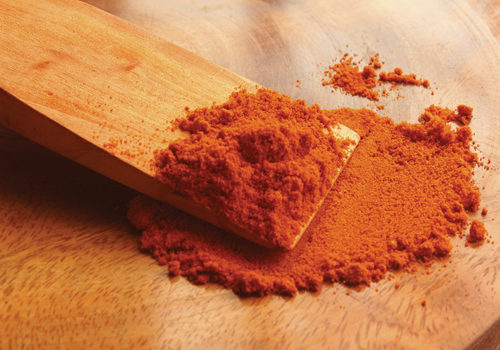
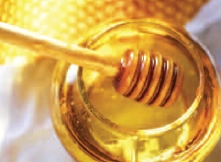 sweetener that also serves as a flavor base is malt extract, Morano says. In fact, he says, “malt extract is probably more of a flavoring than it is a sweetener.” It possesses less than half the sweetness of sugar, yet is critical in certain products for the flavor it provides. Explaining the food chemistry involved, Morano says that most sweeteners are basically carbohydrates, specifically types of sugar. But malt extract has something that sets it apart. “Malt extract is extremely interesting from the viewpoint that it has 5% hydrolyzed protein,” he says, adding that heating it results in a Maillard reaction (which requires the presence of amino acids) instead of the caramelization reaction found with sugar.
sweetener that also serves as a flavor base is malt extract, Morano says. In fact, he says, “malt extract is probably more of a flavoring than it is a sweetener.” It possesses less than half the sweetness of sugar, yet is critical in certain products for the flavor it provides. Explaining the food chemistry involved, Morano says that most sweeteners are basically carbohydrates, specifically types of sugar. But malt extract has something that sets it apart. “Malt extract is extremely interesting from the viewpoint that it has 5% hydrolyzed protein,” he says, adding that heating it results in a Maillard reaction (which requires the presence of amino acids) instead of the caramelization reaction found with sugar.






